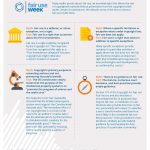Feb
23

Posted by Patricia Devine on February 23rd, 2017
Posted in: Resource Sharing & Document Delivery, Training & Education
 In conjunction with Fair Use/Fair Dealing Week 2017, the Association of Research Libraries is releasing an infographic that refutes 10 popular misperceptions about fair use. Fair use and fair dealing are vitally important rights for everybody, everywhere — students, faculty, librarians, journalists, and all users of copyrighted material. These doctrines provide balance to the copyright system by allowing the use of copyrighted resources without permission from the rightsholder under certain circumstances, thereby promoting creative progress and accommodating freedom of expression. See: “Fair Use Myths & Facts” infographic (PDF).
In conjunction with Fair Use/Fair Dealing Week 2017, the Association of Research Libraries is releasing an infographic that refutes 10 popular misperceptions about fair use. Fair use and fair dealing are vitally important rights for everybody, everywhere — students, faculty, librarians, journalists, and all users of copyrighted material. These doctrines provide balance to the copyright system by allowing the use of copyrighted resources without permission from the rightsholder under certain circumstances, thereby promoting creative progress and accommodating freedom of expression. See: “Fair Use Myths & Facts” infographic (PDF).
Fair Use/Fair Dealing Week is an annual, community celebration coordinated by the Association of Research Libraries to promote the opportunities presented by fair use and fair dealing, highlight successful stories, and explain these doctrines. Fair Use/Fair Dealing Week 2017 is being observed this week, Monday, February 20, through Friday, February 24. Visit fairuseweek.org to participate or find additional resources on popular topics from this week and previous Fair Use Weeks, including copyright policy and the nature of copyright, factors of fair use, government blogs, digital materials, innovation, fair use in the media, scholarly publishing and open access, educational uses, and case studies.